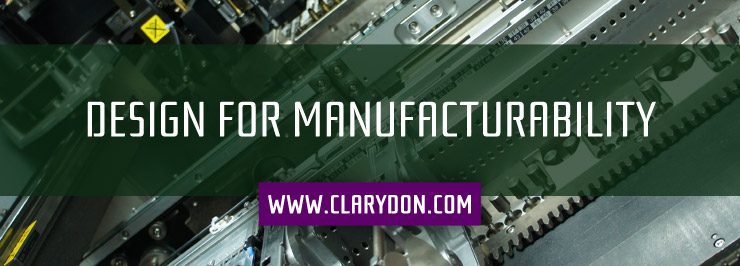Design for manufacturability

I am not sure who came up with the word manufacturability but I like the word, it may have even been me. It describes the ability to manufacture and if a circuit is able to be manufactured easily, it has a cost and quality implication.
If you are putting pencil to paper or mouse to screen I guess on a PCB design, it is helpful to know some standard parameters. These are parameters that if you can stay within will result in the best price board. It is not always possible to stay within the constraints and the manufacturers know this so will generally be able to achieve smaller, tighter or thicker but standard results in best price.
If we start at the base laminate, FR4 standards are 0.8mm, 1.6mm, 2.4mm and 3.3mm. Everything else is a special with cost increases.
If we go through the processes, drill diameters are the next consideration. If we can keep a hole to thickness ratio of about 3 to 1 it gives an easy to plate product. So, on a 1.6mm thick board, a hole of 0.5mm or above is easy to plate reliably.
Next, imaging. If the tracks and gaps can be kept to 0.15mm or above, there is no special attention needed in the processes. If the anular ring can be kept to hole diameter + 0.3mm, it again requires nothing special.
Plating is straight forward and expect to achieve about 20 microns through the hole and a little bit more on the surface. This is a reliable connection.
Etching 0.15mm gap and track is relatively easy so again, no extra process attention.
The run in to finished product is easy now, similar rules on anular ring as imaging apply to solder mask, and the only other consideration is profile. Scoring is excellent in reasonable volume as it allows the boards to be packed together tighter on the panel and the process is very quick. The downside is the overall dimensions are a bit inconsistent in line with the breaks. Routing, especially on internal pins, gives a lot more accurate profile and in smaller volumes is the best way to go. More so if the board has cut outs or chamfered corners.
Again, this is an appreciation not a law. Whereas the processes can be pushed much further than this, the cost effectiveness on these few small points will benefit the user.
Again, happy to take your questions on this and suggestions of what to put under the magnifying glass next month. If not, multi-layer builds and sequential bonding is going to be inspected. Until then, keep on etching.
